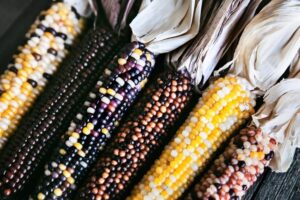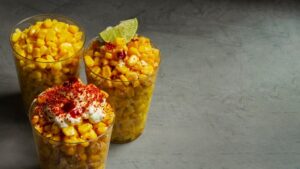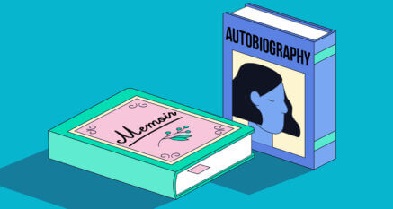Glass Gem Corn, often referred to as the most beautiful corn in the world, is a mesmerizing heirloom variety that captivates both farmers and food enthusiasts. With its kaleidoscopic array of colours, Glass Gem Corn not only serves as a stunning ornamental piece but also holds significant cultural and historical value. In this comprehensive article, we delve deep into the origins, cultivation practices, and various uses of this extraordinary corn variety.
The Origins of Glass Gem Corn
Glass Gem Corn traces its roots back to Carl Barnes, a part-Cherokee farmer from Oklahoma. Barnes dedicated his life to preserving and reviving ancient corn varieties, a passion that eventually led to the creation of Glass Gem Corn. By carefully selecting and cross-breeding vibrant kernels from different heirloom strains, Barnes succeeded in producing corn with a dazzling array of colours. This meticulous process spanned several decades, resulting in the multicoloured marvel we know today.
The Unique Characteristics of Glass Gem Corn

A Spectrum of Colors
One of the most striking features of Glass Gem Corn is its incredible colour diversity. The kernels can range from deep blues and purples to bright reds, oranges, yellows, and even translucent whites. This vibrant palette makes Glass Gem Corn an exceptional ornamental crop, perfect for decorative purposes during the fall harvest season.
Genetic Diversity and Heirloom Status
Glass Gem Corn is classified as an heirloom variety, meaning it is open-pollinated and has been passed down through generations. This genetic diversity not only contributes to its stunning appearance but also ensures the preservation of traditional farming practices and cultural heritage. The open-pollinated nature of Glass Gem Corn allows for the continued cultivation and sharing of seeds, promoting agricultural biodiversity.
Cultivating Glass Gem Corn
Ideal Growing Conditions
To successfully grow Glass Gem Corn, it is essential to provide the right conditions. This variety thrives in warm climates with plenty of sunlight. The soil should be well-drained and rich in organic matter to support healthy growth. Planting typically occurs in late spring after the danger of frost has passed, allowing the corn to mature throughout the summer months.
Planting and Spacing
Proper planting techniques are crucial for maximizing yield and ensuring healthy plants. Seeds should be sown about 1 to 1.5 inches deep, with a spacing of 10 to 12 inches between each plant. Rows should be spaced approximately 30 to 36 inches apart to allow for adequate airflow and sunlight penetration. It is advisable to plant Glass-Gem Corn in blocks rather than single rows to facilitate cross-pollination, which is vital for kernel development.
Watering and Fertilization
Consistent watering is essential for the successful growth of Glass-Gem Corn. The soil should be kept evenly moist, especially during the critical stages of germination and early growth. Mulching can help retain soil moisture and suppress weeds. Additionally, providing a balanced fertilizer rich in nitrogen, phosphorus, and potassium will support robust plant development and vibrant kernel colouration.
Harvesting and Storing Glass- Gem Corn
Timing the Harvest
Knowing when to harvest Glass Gem Corn is key to achieving the best results. The ears should be left on the stalks until the husks turn brown and dry. This typically occurs about 100 to 120 days after planting. Harvesting too early can result in underdeveloped kernels, while harvesting too late may lead to pests and diseases.
Drying and Shelling
Once harvested, the corn ears should be allowed to dry further in a cool, well-ventilated area. This process can take several weeks and is essential for preserving vibrant colours and ensuring long-term storage. After drying, the kernels can be shelled by hand or using a mechanical sheller. Properly dried and shelled Glass Gem Corn can be stored in airtight containers in a cool, dry place for several years.
Uses of Glass -Gem Corn

Culinary Applications
While Glass-Gem Corn is primarily grown for its ornamental value, it is also edible and can be used in various culinary applications. The kernels can be ground into cornmeal for baking or used to make traditional dishes such as tortillas and tamales. Additionally, the corn can be popped, producing small, colourful popcorn that is sure to delight both children and adults.
Crafts and Decor
The vibrant, jewel-like appearance of Glass-Gem Corn makes it a popular choice for crafts and decor. The dried ears can be used to create stunning centrepieces, wreaths, and other decorative items. The kernels themselves can be incorporated into jewellery and art projects, adding a touch of natural beauty to handmade creations.
Preserving the Legacy of Glass-Gem Corn
Seed Saving and Sharing
To ensure the continued existence of Glass-Gem Corn, it is crucial to engage in seed saving and sharing. By preserving and passing down seeds, we can maintain the genetic diversity and cultural heritage associated with this unique corn variety. Gardeners and farmers are encouraged to exchange seeds and collaborate with seed banks to promote the widespread cultivation of glass gem corn.
Educational and Cultural Significance
Glass Gem Corn serves as a living testament to the importance of preserving agricultural biodiversity and traditional farming practices. It offers valuable educational opportunities, allowing us to learn about the history, science, and cultural significance of heirloom crops. By growing and celebrating Glass Gem Corn, we honour the legacy of Indigenous farming traditions and contribute to a more sustainable and resilient agricultural future.






